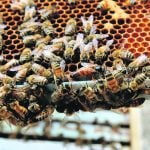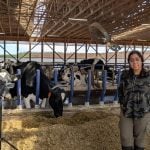Burial of all birds and all litter from barns on a “depopulated” southern Saskatchewan poultry farm is complete, the Canadian Food Inspection Agency said Thursday.
Decomposition after burial will effectively kill the highly pathogenic H7N3 avian flu virus that infected some birds in the Regina Beach-area flock, the agency said.
The burial, however, doesn’t spell the end of a provincewide ban on movement of live birds out of the province, nor of a requirement for permits to move live birds or hatching eggs from outside Saskatchewan across the province to other parts of the country. Those restrictions, and others within three and 10 km of the infected area, remain “as a precaution,” CFIA said in a statement.
Read Also

Mexico agriculture secretary says still no date for restarting cattle exports to U.S.
Mexican Agriculture Minister Julio Berdegue said on Wednesday that Mexico and the United States have not yet set a date to resume Mexican cattle exports amid an outbreak of the flesh-eating screwworm parasite.
The restrictions will be lifted after testing confirms no further infection is found in other birds in the area. Tests done on other flocks outside the farm, within the three-km and 10-km areas as well as “representative samples” from across the province, have so far turned up negative.
The farmer in question won’t be allowed to bring new birds onto his property until cleaning and disinfection are complete. However, the farmer has previously told reporters that will take some time, because those costs must be paid of his pocket. Government compensation programs now available only cover market value of the lost birds and costs related to culling and burying them.
The H7N3 virus — which killed a number of birds in the flock of 50,000 — affects birds but not people. It’s not related to the H5N1 strain, blamed for the deaths of dozens of people overseas who caught it from contact with infected birds.
Health officials worldwide are tracking H5N1, citing fears it may mutate into a form that people can catch from other people, and thus spur a pandemic.











